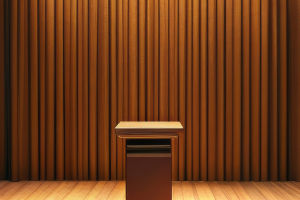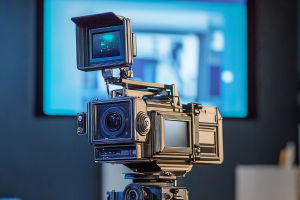Abstract art has played a vital role in shaping the modern art landscape. From the early 20th century to the present day, its evolution has mirrored social, cultural, and technological changes.
In this article, we will explore how abstract art emerged, its transformation over the years, and its lasting impact on the art world.
Early Foundations of Abstract Art
The roots of abstract art can be traced back to the early 1900s, when artists began to move away from traditional, representational forms of painting. The initial break with realism came through movements like Cubism, which fractured the traditional representation of objects into geometric shapes and forms.
Artists like Pablo Picasso and Georges Braque challenged the very idea of depicting reality in their works.
Around the same time, Wassily Kandinsky, often regarded as the father of abstract art, began exploring non-representational forms. His works focused on the use of color, shape, and line to express emotion and spirituality, rather than any physical objects or scenes. This laid the groundwork for future generations of abstract artists.
The Rise of Geometric Abstraction
By the 1910s and 1920s, abstract art began to take a more structured form with movements like De Stijl and Constructivism. Artists such as Piet Mondrian and Kazimir Malevich championed geometric abstraction, emphasizing precise shapes and clear lines.
They believed that abstraction could provide a universal language that transcended the limitations of specific cultural and historical contexts.
Mondrian's grid-based works, characterized by primary colors and straight lines, became iconic in the world of geometric abstraction. Malevich, with his famous "Black Square," pushed the boundaries of abstraction, encouraging viewers to explore the purity of form without the distraction of recognizable objects.
Abstract Expressionism: Emotional Freedom
The mid-20th century saw the emergence of Abstract Expressionism, a movement that placed emphasis on spontaneous, emotional expression. Artists like Mark Rothko, and Willem de Kooning moved away from geometric order and sought to convey raw emotion through free-flowing brushstrokes, color fields, and dynamic compositions.
Pollock's "drip paintings" and Rothko's luminous color fields became symbols of the era's search for individual freedom and the exploration of unconscious emotions. Abstract Expressionism was, as artists sought new ways to process the trauma and complexity of the human experience.
Minimalism and Post-Painterly Abstraction
In the 1960s, a new wave of abstraction known as Minimalism emerged. Unlike the expressive and emotional works of Abstract Expressionism, Minimalist artists like Frank Stella and Donald Judd stripped away any superfluous elements to focus solely on the most basic shapes and forms.
This emphasis on simplicity and purity in abstraction sought to remove the artist's emotional involvement in the artwork, making the viewer's experience the primary focus.
Simultaneously, Post-Painterly Abstraction developed as a reaction to the intense emotionalism of Abstract Expressionism. Artists such as Helen Frankenthaler and Morris Louis sought to create more fluid, open compositions using large areas of color.
Their works celebrated the materiality of paint and the process of painting itself, highlighting the relationship between the canvas and the artist's gesture.
Contemporary Abstract Art
Today, abstract art continues to evolve as artists experiment with new media, technology, and social contexts. Digital art and virtual reality have opened up new possibilities for creating abstract experiences, allowing artists to manipulate space, color, and movement in ways previously unimaginable.
Furthermore, abstract art today is less about adhering to one particular style or movement. Contemporary abstract artists often mix media, techniques, and cultural references, creating works that reflect the globalized, interconnected world we live in. For instance, street art and graffiti have become major players in the abstract art scene, with artists like Jean-Michel Basquiat and Banksy infusing abstraction with social commentary.
The Influence of Abstract Art on Other Art Forms
The impact of abstract art extends far beyond traditional painting. Its influence can be seen in architecture, design, and even music. The freedom of expression inherent in abstract art has inspired architects like Frank Gehry and Zaha Hadid to push the boundaries of form and structure in their buildings.
In music, abstract compositions and experimental soundscapes continue to draw from the ideas of abstraction in visual arts. Composers like John Cage and Karlheinz Stockhausen sought to incorporate randomness, structure, and the exploration of sound itself into their works, much in the same way abstract artists were exploring non-objective forms of visual expression.
The Future of Abstract Art
As we look to the future, the evolution of abstract art remains a dynamic and open-ended journey. With the rise of AI and machine learning, new opportunities for creating and experiencing abstract art are emerging.
Artists are increasingly using algorithms and digital tools to create generative art, where patterns and forms are often beyond the direct control of the artist, leading to intriguing collaborations between human creativity and technology.
The lasting influence of abstract art is undeniable, and its ability to evolve and adapt to new mediums and concepts suggests that this artistic movement will continue to challenge perceptions of reality, beauty, and emotion for years to come.
Conclusion
The journey of abstract art, from its early rejection of realism to its current global, digital influence, shows how the movement has continually pushed the boundaries of what art can be. Abstract art offers a space for experimentation, freedom of expression, and emotional depth.
As we move forward, its ability to evolve in response to new technologies and social contexts will ensure its continued relevance in the art world. What do you think the future holds for abstract art? Let us know your thoughts!


